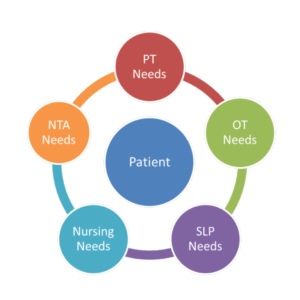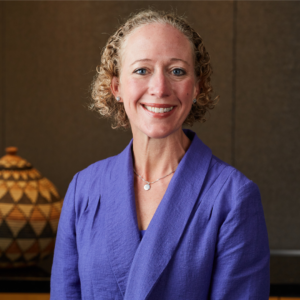Questions & answers from the American Association of Nurse Assessment Coordinators (AANAC)
Q: Regarding Significant Change in Status Assessments (SCSA): The RAI User’s Manual states that improvement or decline would be in two or more of the listed areas. The ADLs are listed as one area and then other areas follow. If the resident improves only in ADLs but improves in more than one ADL (or for decline, the only decline is in two or more ADLs), does this mean the resident qualifies for Significant Change assessment? In other words, if the change is only in ADLs, does this qualify?
A: The paragraph directly above the guidelines for determining Significant Change in Status on page 2-8 states, “This may include two changes within a particular domain (e.g., two areas of ADL decline or improvement).” So, there you have it. Two changes within the ADL domain itself are enough to warrant a SCSA if the resident meets the guidelines for requiring a significant change.
Q: We are having a discussion about whether pommel cushions are a restraint since they do restrict the ability to stand. What is your take on this?
A: These would be a restraint if the resident has the ability to get out of a regular bed but is unable to get up from the low bed. This would be consistent with the definition of physical restraints found in the RAI User’s Manual and the State Operations Manual (for the survey process): “any manual method or physical or mechanical device, material, or equipment attached or adjacent to the resident’s body that the individual cannot remove easily which restricts freedom of movement or normal access to one’s body.” There isn’t anywhere to code this on the MDS, but pommel cushions should be evaluated and care planned as a restraint under the circumstances described.
Q: Medicare program manuals indicate that a beneficiary may receive both hospice and Medicare Part A benefits simultaneously in a SNF for unrelated issues (Chapter 9, Section 20.3, www.cms.hhs.gov/manuals/downloads/bp102c09.pdf, and Provider Reimbursement Manual, section 2836H, www.cms.hhs.gov/manuals/PBM/list.asp). Is there a reference anywhere that clarifies exactly what “unrelated” really means?
A: This is quoted from CMS officials during the March 2005 LTC Open Door Forum. Hospice beneficiaries can receive skilled services under the Medicare Part A extended-care benefit “in rare instances.” But “it has to be very clear that the SNF Part A stay is in no way related to the hospice-causing illness. The hospice is responsible for all medically necessary and reasonable services for all levels of care for the terminal and related conditions.” For example: A patient receiving Medicare hospice services for lung cancer sustains a fractured hip. “It would have to be proven that the hip fracture is not related to the cancer.” If the hip fracture was caused by bone metastases or pain management that causes unsteadiness, for example, then that would be related to the terminal condition. “Another example is a patient who has lung cancer and is on anticoagulants for the prevention or treatment of microemboli. That treatment would also be considered part of the relation to the terminal diagnosis. However, if the patient is on an anticoagulant for a diagnosis such as atrial fibrillation, that would be unrelated.”
Q: Is ostomy care skillable for 100 days?
A: No, not routinely. According to the Medicare Benefit Policy Manual, Chapter 8, care of a colostomy during the early postoperative period in the presence of associated complications is coverable. The need for skilled nursing care during this period must be justified and documented in the patient’s medical record. The manual also states that teaching patients how to care for a recent colostomy or ileostomy may be covered. The Code of Federal Regulations specifies that general maintenance care of colostomy and ileostomy is not a covered service.
Q: In Section K6b, average fluid intake, my dietitian has always combined the total amount of fluid (enteral feeding + g-tube water flush) received each day for 7 days and divided the sum by 7 to obtain an average fluid intake. She was recently told that the correct procedure is to add the total of g-tube water flush and the “extracted water” from the GT feeding formula (not just based on feeding formula rate). Is this correct information?
A: Yes, it is correct. The instructions on page 3-156 of the RAI User’s Manual specify, “Also include the water used to flush as well as the ‘free water’ in the tube feeding (based upon the percent of water in the specific enteral formula).” The label on the bottle indicates the amount of free water versus solids in the formula.
Q: We transmitted Medicare Part A MDS late—more than the 31 days after MDS completion (R2b) required by the regulation. Now a financial consultant says we must bill the default rate because we transmitted the assessment late. Is this true?
A: No, this is not true. The determination of “completed timely” is based on the Assessment Reference Date (ARD) being set within the required time frame. See page 2-40 of the RAI User’s manual.
The following is from a Q & A document released by CMS in 2002. There have been no changes to this since then:
How should a SNF bill if the assessment was completed timely, but was not submitted timely? Using the RUG-III rate determined from the assessment? At the default rate?
At the present time, we are not applying claims processing penalties on providers who are completing the MDS in a timely manner, but who transmit the data late. Claims should be billed at the RUG-III rate for the assessment that was completed timely.
Q: A resident was admitted to the SNF with a large red maceration on her left side from waist to thigh. It looks like she wasn’t turned and positioned in the hospital and was left to lie in urine. Now the area is cracked and red with some blood. How do I code it?
A: In order to know how to code it—and how to treat it—you must first know the underlying cause. If pressure was an underlying cause, then it would be coded in M1, ulcers, and M2a, pressure ulcers. If pressure was not an underlying cause and it was caused by urine burn, then it would be coded in M4d, rashes. Please see the definitions for these items on page 3-165 in the RAI User’s Manual.
With thanks to Diane Carter, RN, MSN, CS, President and CEO of the American Association of Nurse Assessment Coordinators (AANAC).
Sidebar
About AANAC
Q: What is AANAC and how do I get my questions answered on the Resident Assessment Instrument/Minimum Data Set (RAI/MDS)?
A: The American Association of Nurse Assessment Coordinators is a nonprofit association of your peers, including all members of the interdisciplinary team dedicated to networking, education, and advocacy on behalf of all clinicians involved in the RAI/MDS process. From our online discussion group each week, we select the best questions and answers our members have raised. The questions and answers are reviewed by a national advisory board of experts in this field, and they are subsequently published in NAC News, AANAC’s weekly online newsletter. In addition to our weekly questions and answers, the newsletter contains a variety of timely and accurate information on this process. AANAC also offers certification and other educational information services for clinicians committed to accurate and timely completion of the MDS. For further information on AANAC, call (800) 768-1880 or visit www.aanac.org.
Related Articles
Topics: Articles , MDS/RAI , Regulatory Compliance , Rehabilitation











